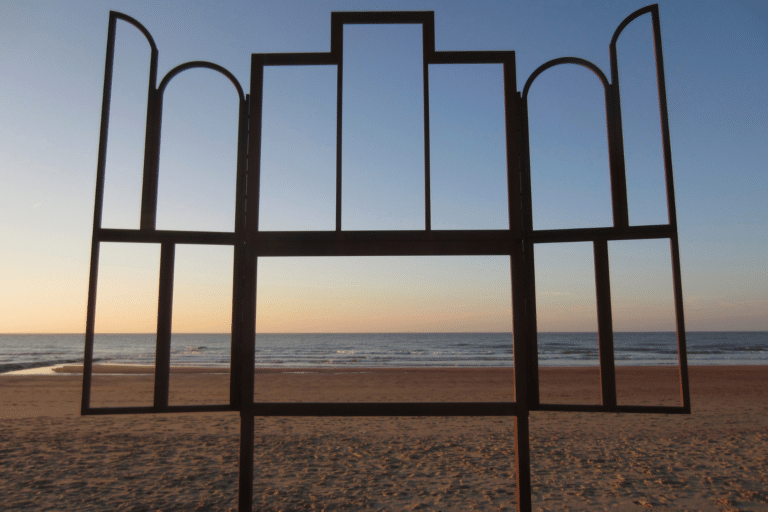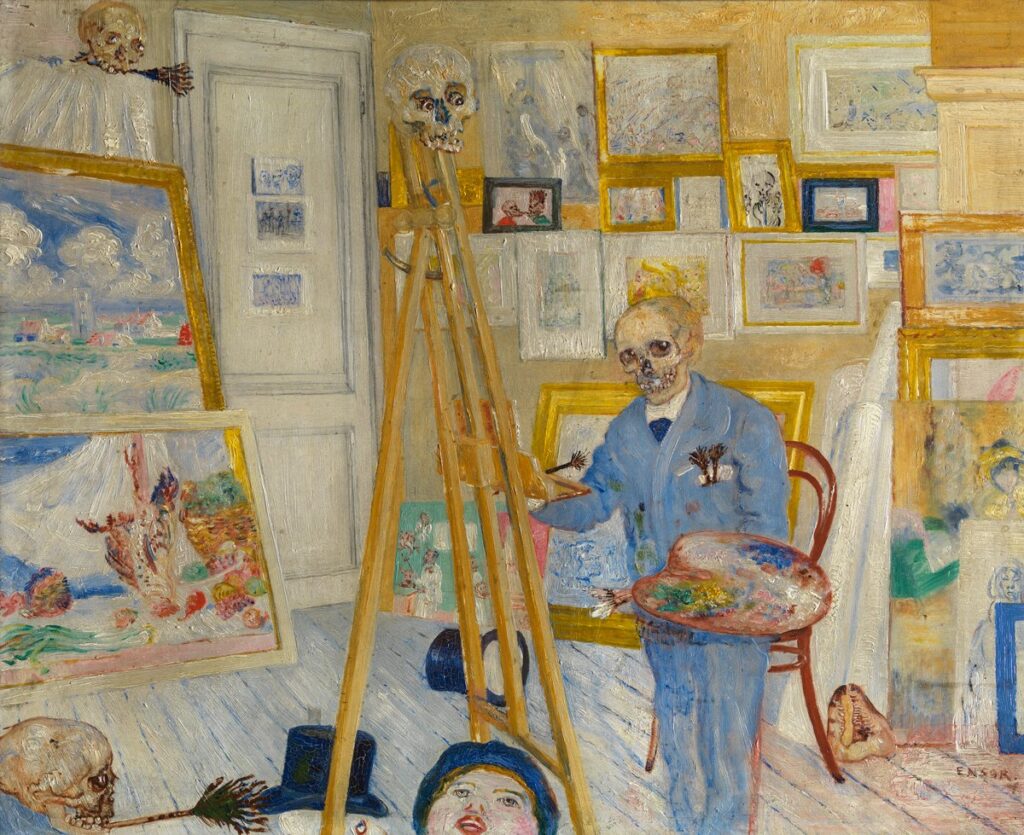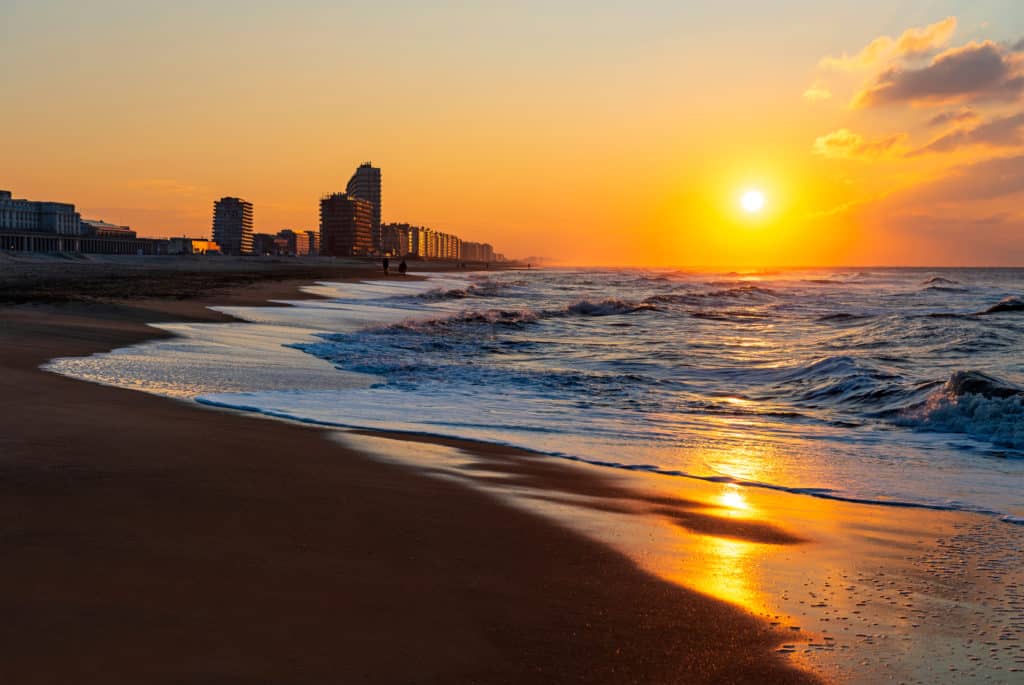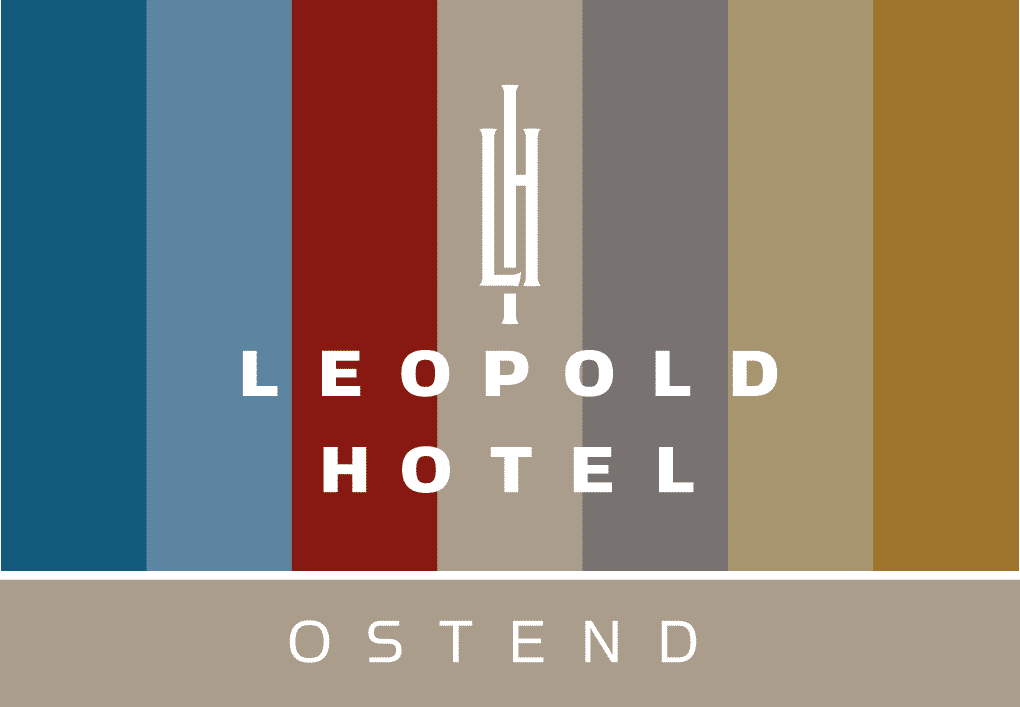Whoever says Ostend, says James Ensor. This year, the Belgian coastal city of Ostend transforms into “Ensor City” and the great master will be honoured for an entire year. In 2024, it is exactly 75 years since James Ensor passed away in “his” Ostend. But who exactly was he? And why is he so inextricably linked to Ostend?
James Sidney Edouard Baron Ensor was a Belgian artist best known for his idiosyncratic paintings, drawings, and etchings, but was also a writer and musician. Considered a pioneer of modern art in Belgium, he had a unique style that is hard to categorize under any particular art movement. However, if you want to, symbolism is a fine choice. Ensor is a native of Ostend who lived there all his life, except for his student years in Brussels. Ostend is also where he died in 1949. At the turn of the century, he worked in his mother’s shop that sold souvenirs, shells, and chinoiserie, as well as carnival items such as masks and costumes. It became his main source of inspiration. He painted colourful works featuring masked figures and skeletons. Come see for yourself the place where Ensor felt so at home and stay overnight in the beautiful 1920s art-deco building of Leopold Hotel Ostend, a building he probably knew himself.
James Ensor – Early Life
Ensor was born on April 13 1869 in Ostend, a coastal town in the north-west of Belgium. His father, James Frederic Ensor, was a British engineer of bridges and roads and married James Ensor’s mother, Maria Catherina Haegheman from Ostend, in 1859. After a failed adventure in the United States shortly after the birth of his son, father Ensor returned home penniless and never became the same again. He found it hard to digest the failure and sought refuge in alcohol. He became an outcast and was humiliated by those he considered friends and died when Ensor was 27 years old. Ensor developed a lasting resentment against the social class that had so heartlessly disowned his father, a sentiment that was later often depicted in his paintings.
But that was not the only problem the family struggled with. James Ensor developed chronic intestinal problems at the age of 25. Meanwhile, his strict mother kept a tight rein on the family. In the 1880s, some of the painter’s works displayed his troublesome family relationships. Ensor depicted his father, mother, aunt, and sister in many of his works and not always favourably.
Focus on masks
Ensor’s mother’s souvenir shop was located on the ground floor of the building where the family lived, at the corner of Vlaanderenstraat and Van Iseghemlaan. (Just a two-minute walk from Leopold Hotel Ostend!) It sold various souvernirs and curiosities such as dolls, porcelain plates, shells and carnival masks worn during the local carnival. The painter took great joy in participating in the carnival and Brussels’ Mardi Gras. From the 1880s onwards, masks became distinctive in Ensor’s paintings. He used masks to portray difficult and distorted relationships in the society of his time. The disfigured and often grotesque masks represented the dark side of the characters in his work. Death is another figure that often recurs as a reminder of the future of those characters.
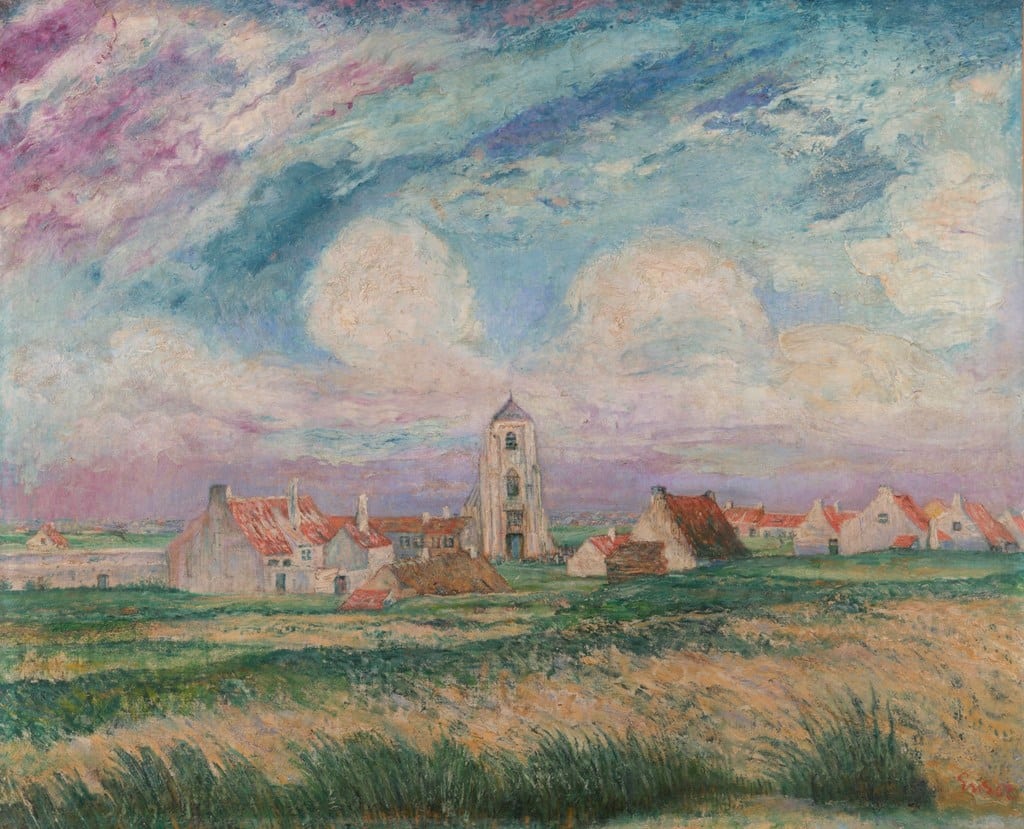
A Proud Belgian
James Ensor was a proud Flemish who spent almost his entire life in Ostend. Old Flemish Masters such as Pieter Brueghel the Elder, and Hieronymous Bosch largely inspired his work. Parallels have been drawn between the Master’s work depicting demonic beasts and grotesque figures. During his academic education, Ensor made numerous copies of the Old Masters’ masterpieces, particularly Rembrandt. He admired his ability to balance dark and light. However, the 19th-century painter brought modernity to his works setting him apart. He liked the maritime landscape and gloomy North Sea coastal weather and depicted Belgian culinary specialities in his paintings like oysters and French fries. When he began to gain notoriety, the local shopkeepers in Ostend happily accepted being paid with Ensor’s work so they became commonplace decorating butchers and other ordinary shops.
Les vingt
In 1883, Octave Maus, a Belgian lawyer, art critic, and writer, initiated Le Groupe des Vingt or Les XX. This group of 20 Belgian artists set out to promote international modern art within Belgium and build their notoriety. They proclaimed themselves an anarchist group that valued freedom of expression. Les vingt held an annual exhibition of its members’ works and invited artists. Despite being a founding member of Les XX, James Ensor had one of his pieces rejected by the group. It was a depiction of Christ being ignored by the roaring crowd of the Brussels Carnival, considered too controversial even for the Avant-guard organisation. Ensor kept the painting and it was displayed to the public in 1929 at a public exhibition of his work.
Ahead of his time
Like many geniuses, James Ensor was ahead of his time. His artistic talent was only recognised towards the end of his life, with which he was nevertheless better off than big names like Van Gogh, Paul Gauguin and Johannes Vermeer (Girl with the Pearl Earring). The latter was only discovered as an artist centuries after his death. During Ensor’s life, the public and critics did not appreciate his paintings’ grotesque figures and bold colours. His attempts to sell his works to museums were unsuccessful. Fame came for Ensor around the 1920s & 30s, when he was well past his 50s. Ensor cultivated a desire to become a baron, in honour of his father who had fallen so mercilessly out of grace. King Albert of Belgium granted that wish in 1929. In 1933 Ensor was nicknamed “The Prince of Painters and Art” by his fellow artists during an event in Brussels. James Ensor died with honour in Ostend in 1949, aged 89. A grand funeral procession followed his coffin to Mariakerke church.
Would you like to learn more about this remarkable artist and admire his work in the city where he drew his inspiration? Then be sure to book a stay at Leopold Hotel Ostend, in a beautiful art-deco building from 1920, the beginning of Ensor’s glory years. Our best available rates are exclusively available when you book directly.
